Charles E W Bean, Diaries, AWM38 3DRL 606/98/1 - February 1918 - Part 3
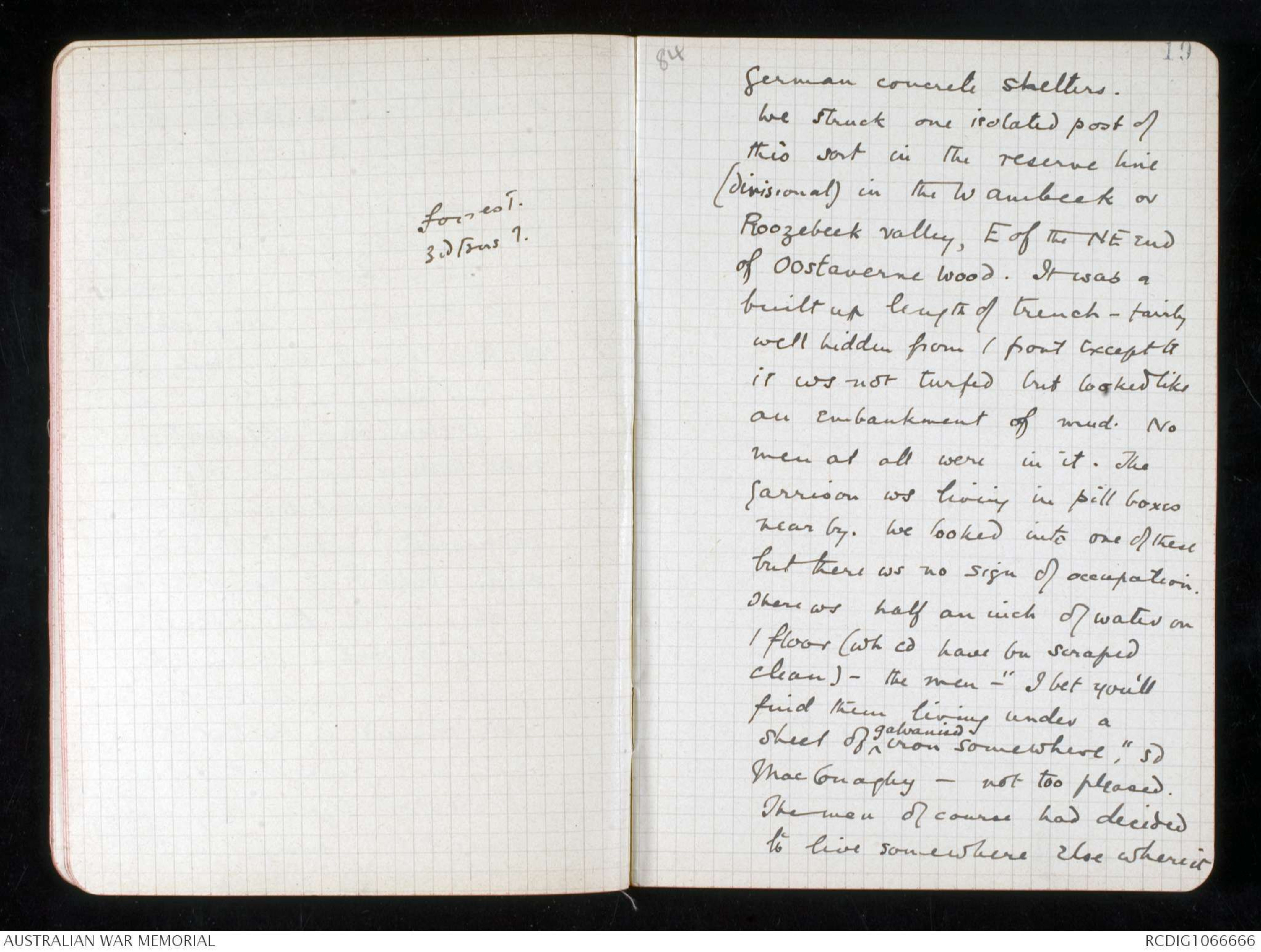
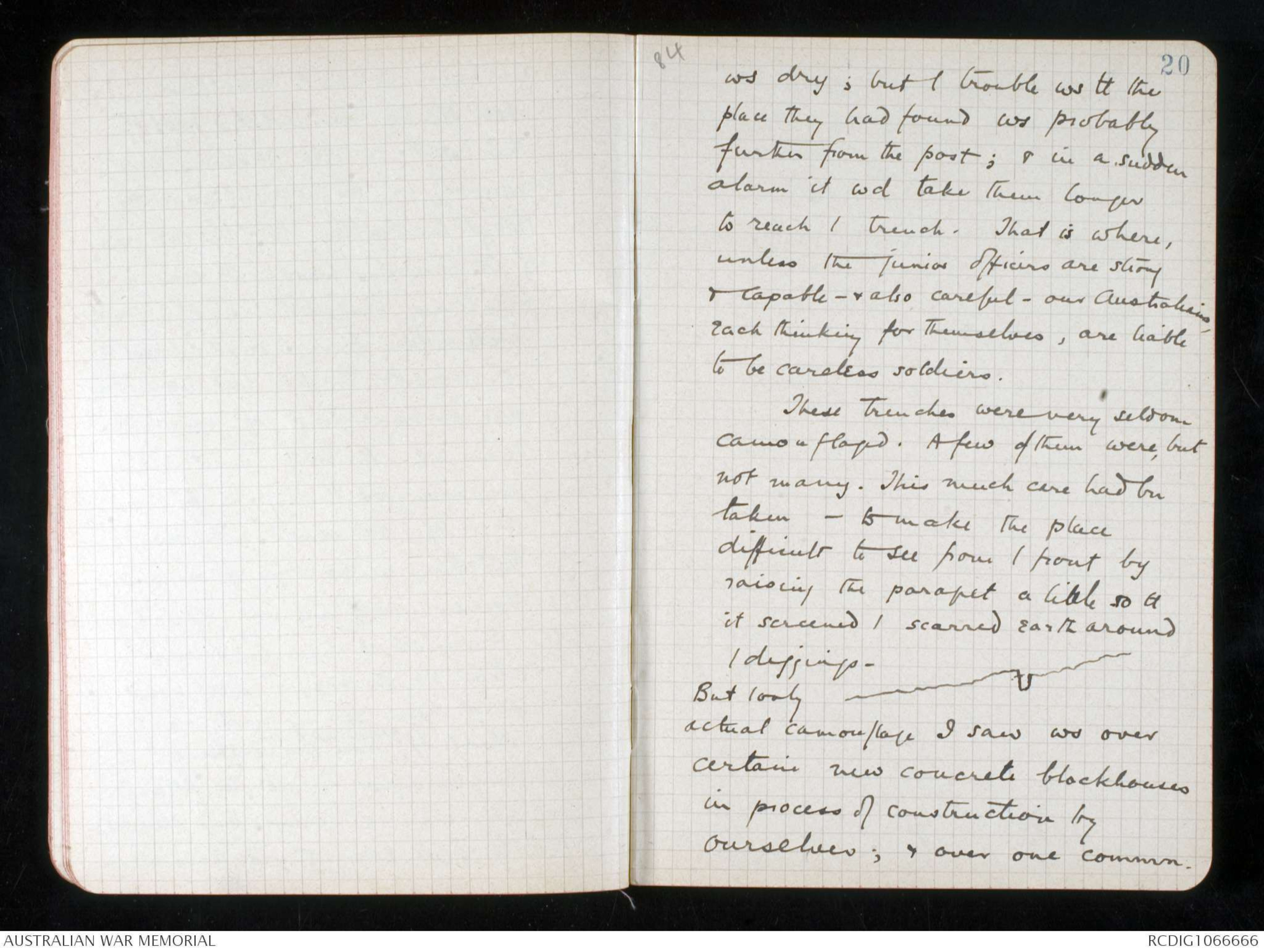
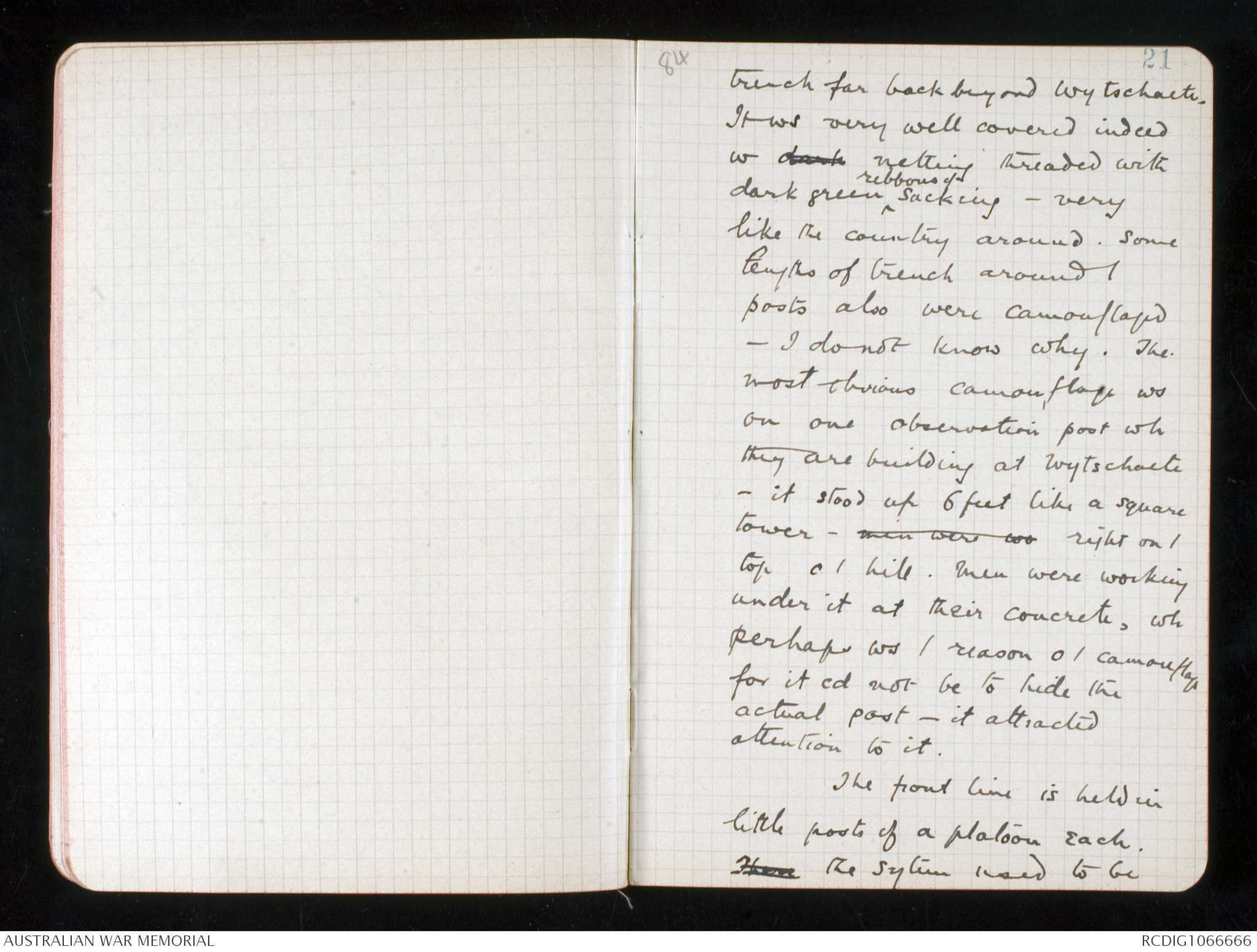
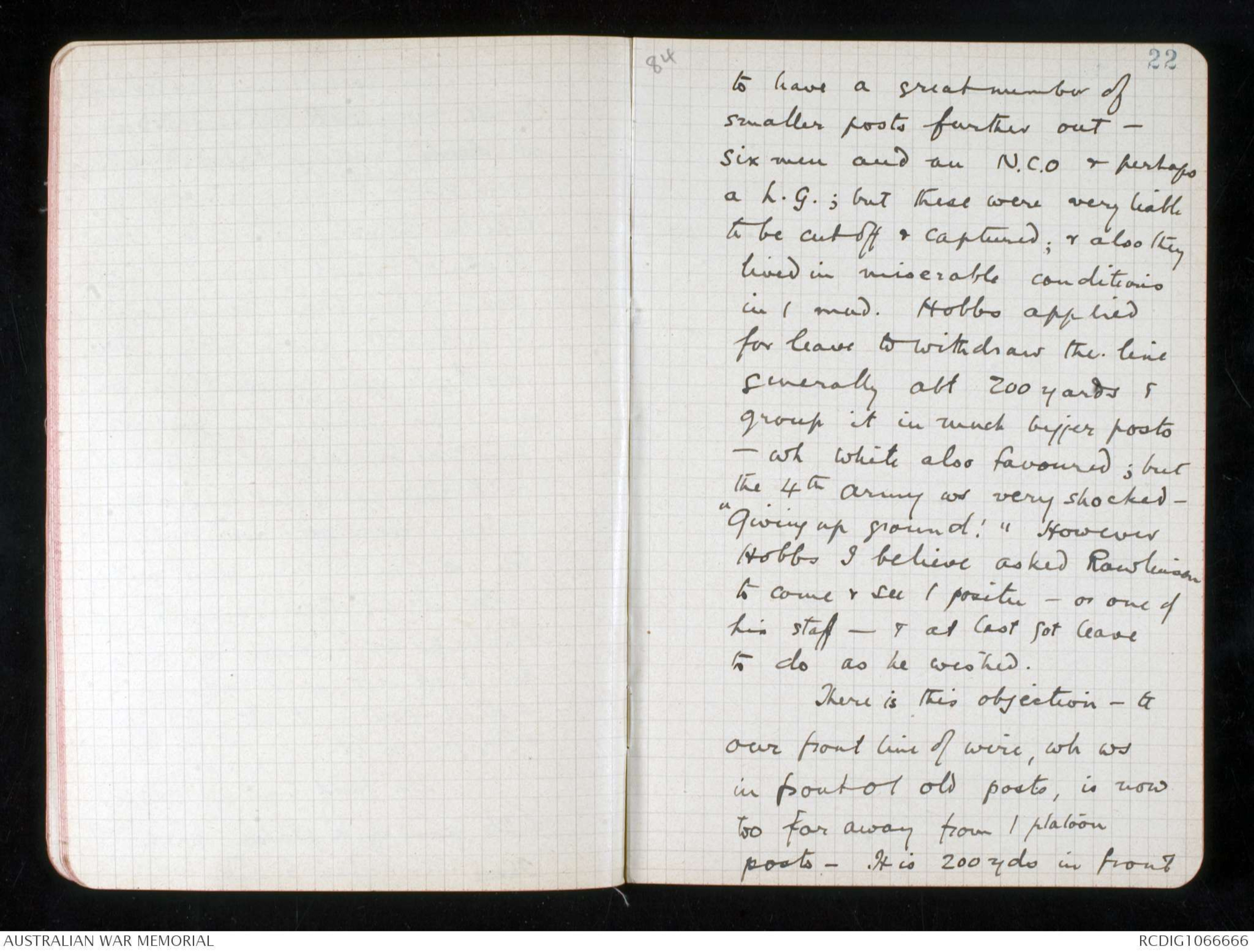
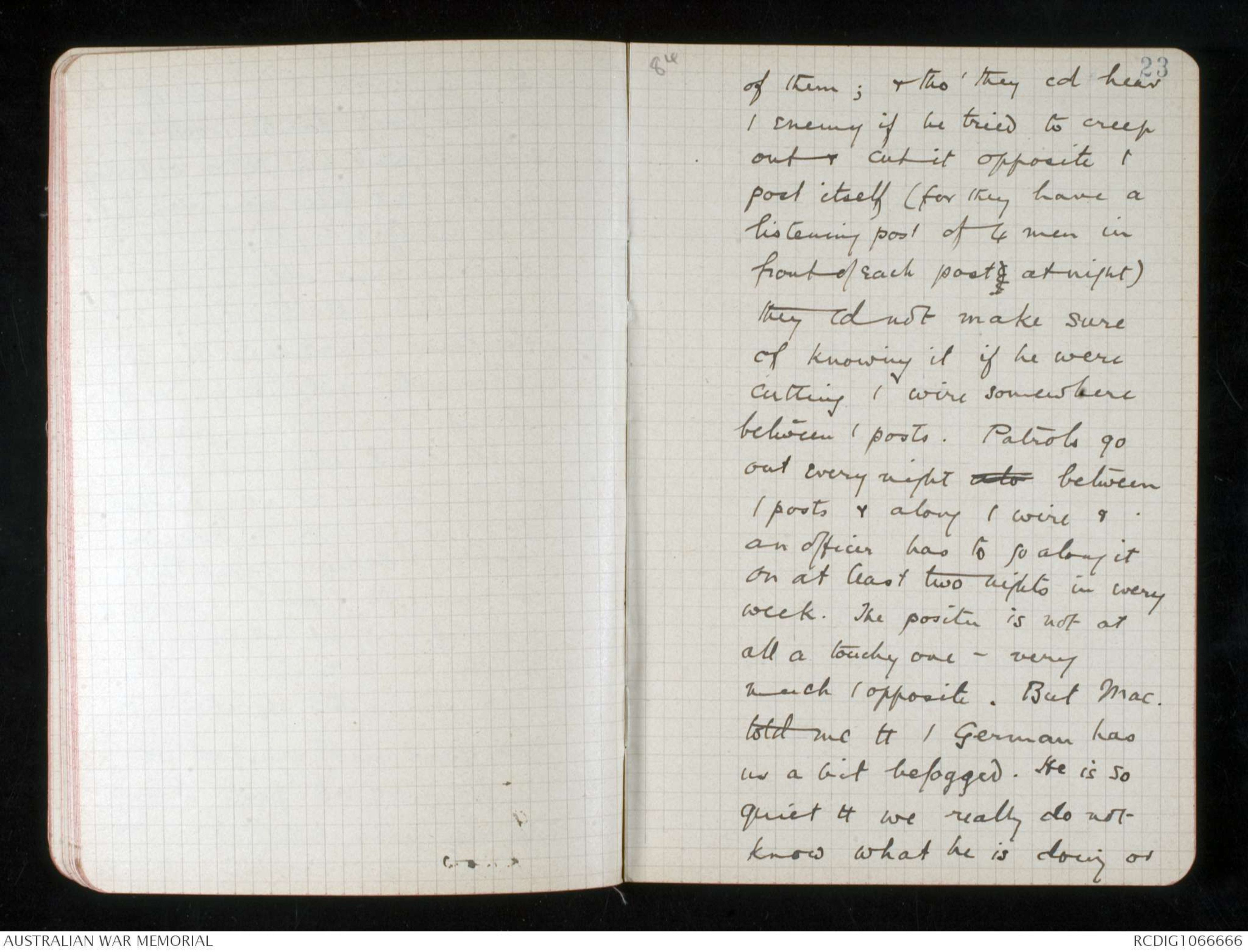
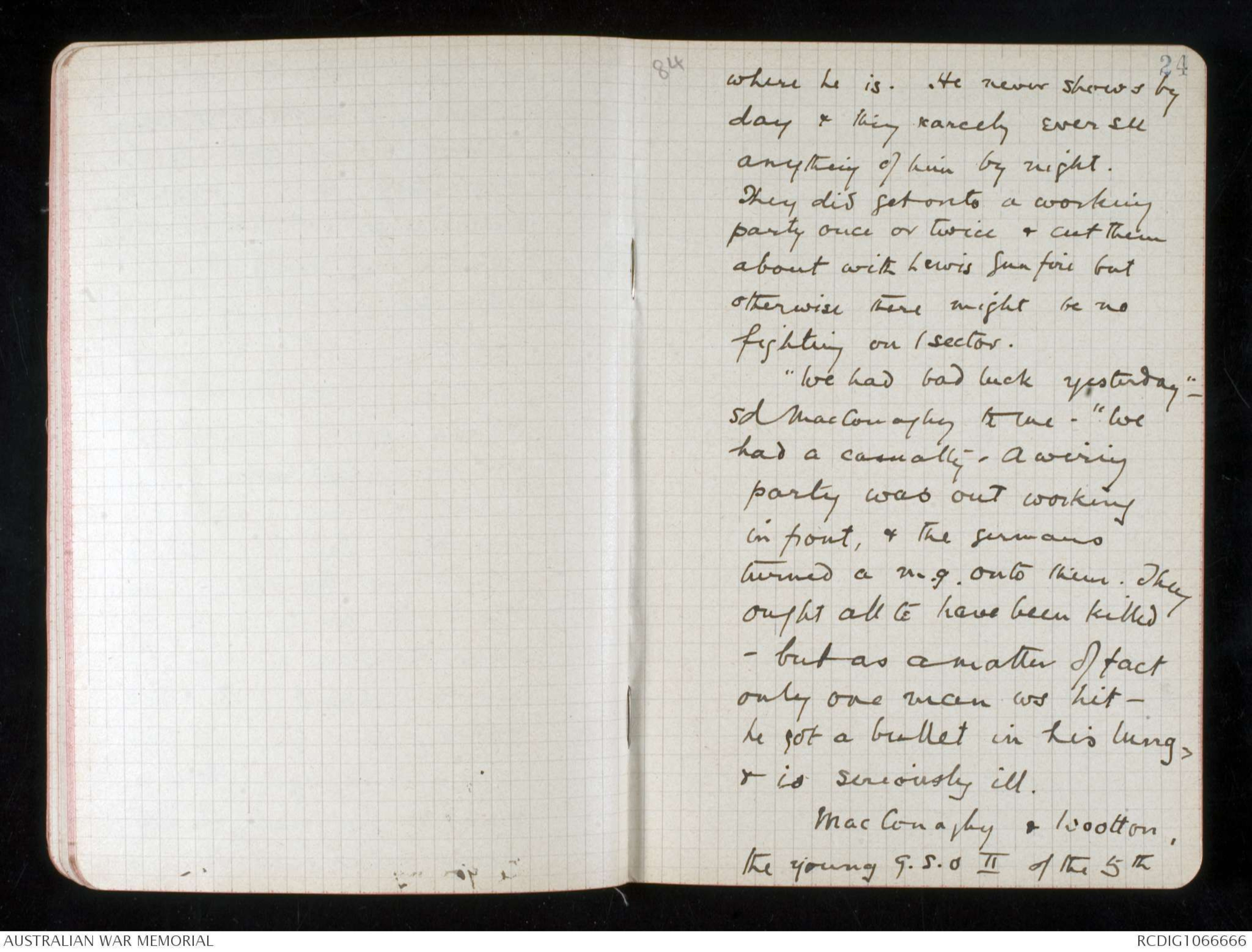
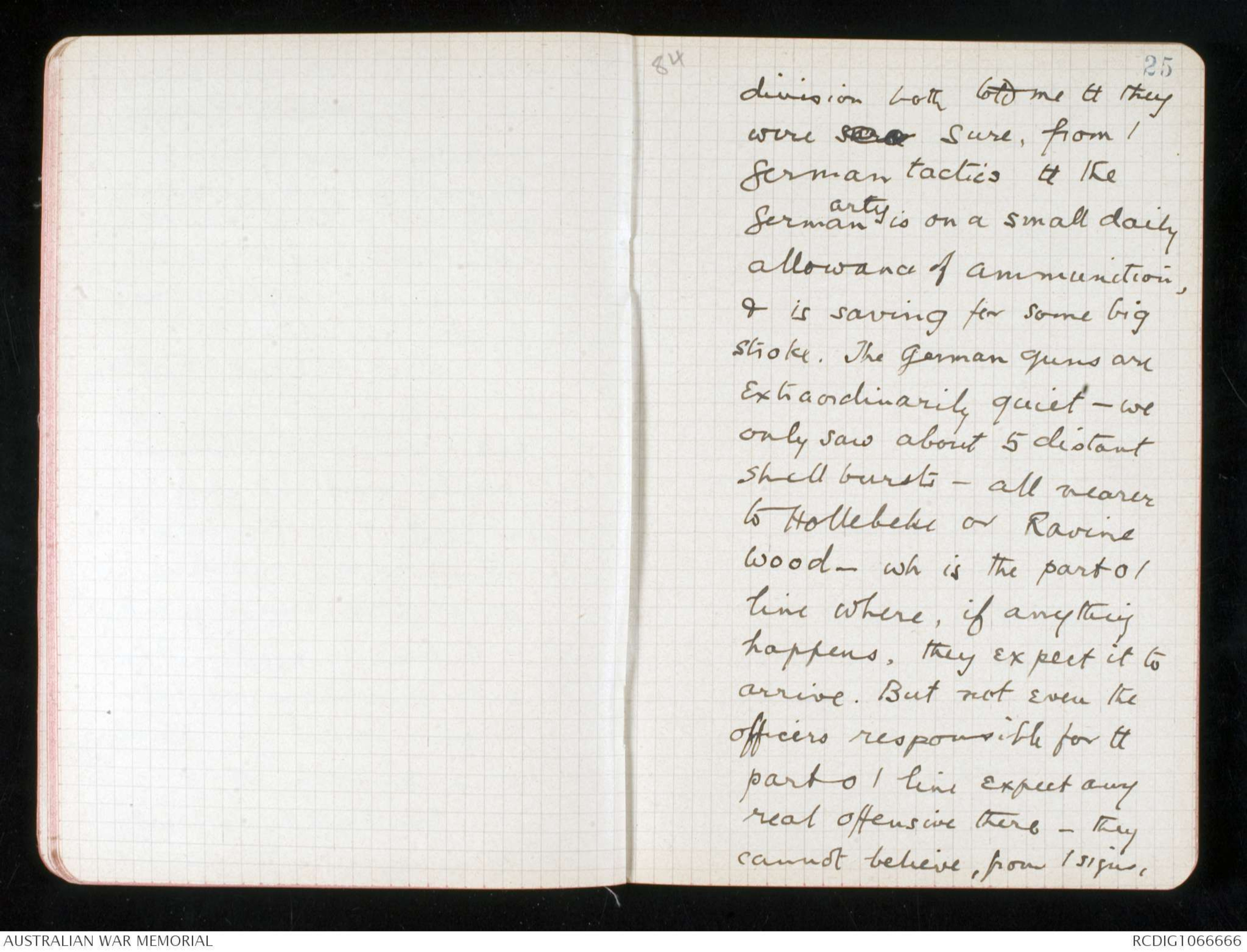
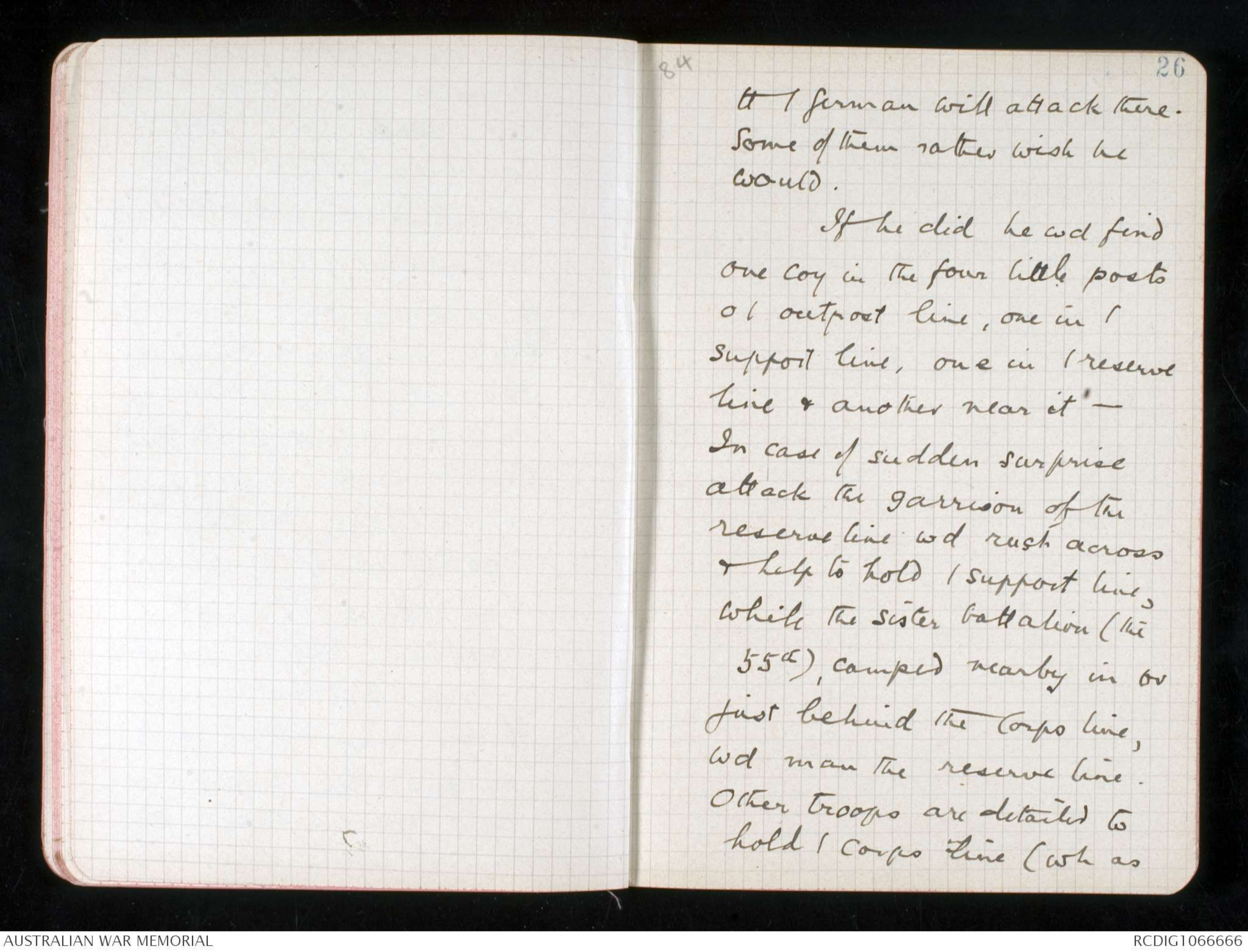
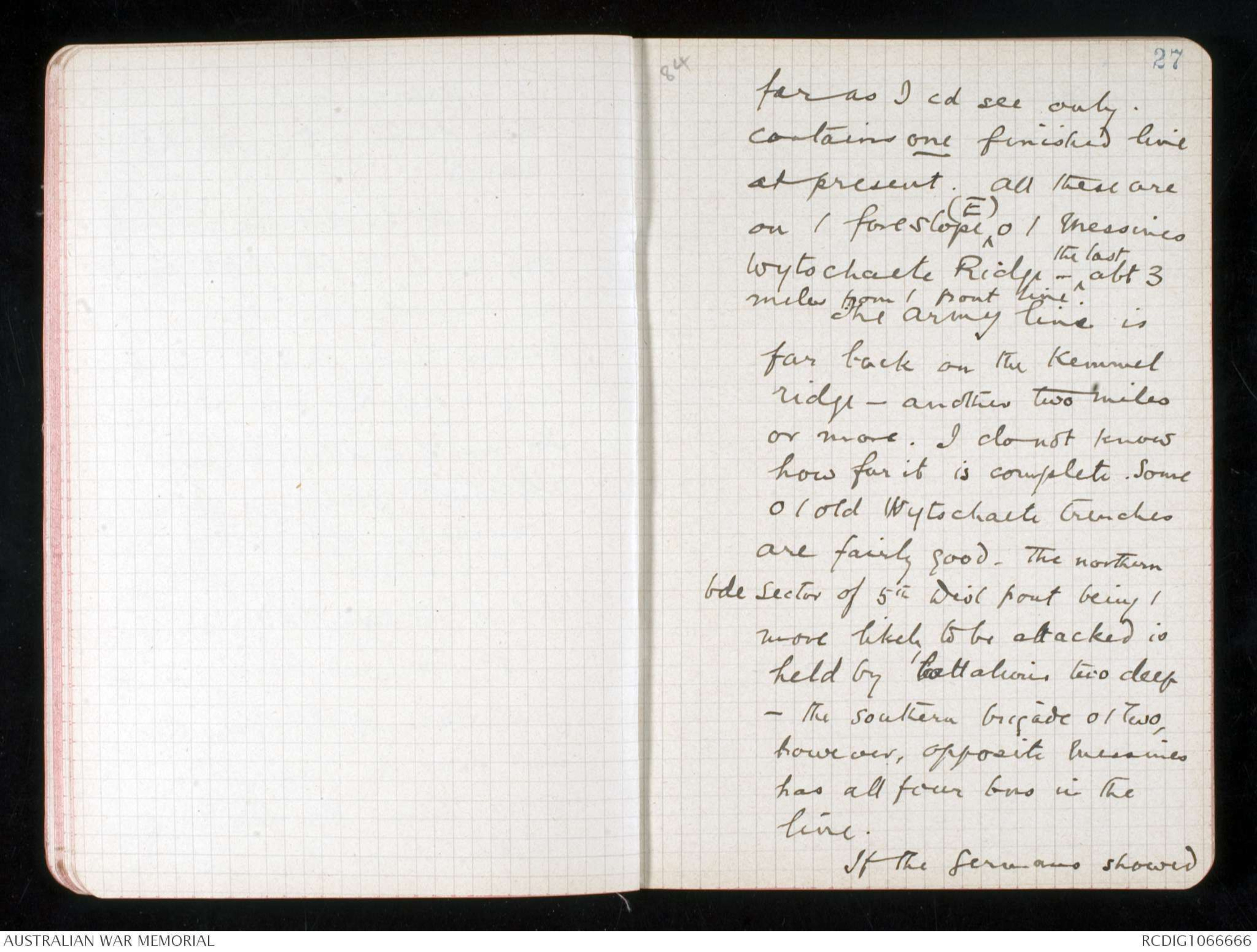
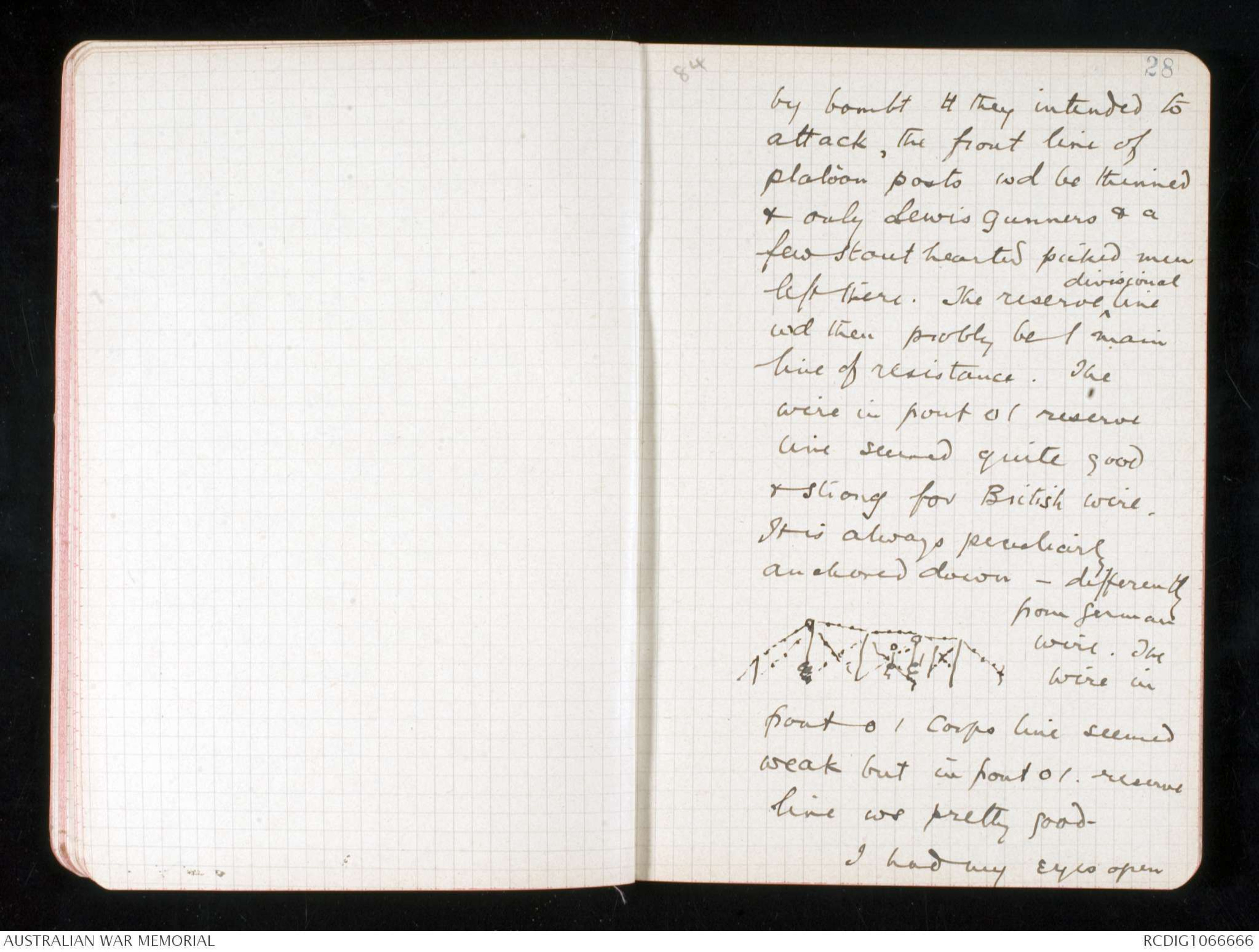
Forrest
3rd [[Bns?]] 7
84
19
German concrete shelters.
We struck one isolated post of
this sort in the reserve line
(Divisional) in the Wambeek on
Roozebeek Valley, E of the NE and
of Oostaverne Wood. It was a
built up length of trench - fairly
well hidden from / front except tt
it ws not turfed but looked like
an embankment of mud. No
men at all were in it. The
Garrison ws living in pill boxes
near by. We looked into one of these
but there ws no sign of occupation.
There ws half an inch of water on
/ floor (wh cd have bn scraped
clean) - the men -" I bet you'll
find them living under a
sheet of ^galvanised iron somewhere," sd
MacConaghy - not too pleased.
The men of course had decided
to live somewhere else where it
84
20
ws dry ; but / trouble ws tt the
place they had found ws probably
further from the post; & in a sudden
alarm it wd take them longer
to reach / trench. That is where,
unless the junior officers are strong
& capable - & also careful - our Australians
each thinking for themselves, are liable
to be careless soldiers.
These Trenches were very seldom
camouflaged. A few of them were, but
not many. This much care had bn
taken - to make the Place
difficult to see from / front by
raising the parapet a little so tt
it screened / scarred earth around
/ diggings
Hand drawn diagram – see original
But / only actual camouflage I saw ws over
certain new concrete blockhouses
in process of construction by
ourselves; & over one commn.
84
21
trench far back beyond Wytschaete.
It ws very well covered indeed
w dark netting threaded with
dark green ^ribbons of sacking - very
like the country around. Some
lengths of trench around /
posts also were camouflaged
- I do not know why. The
most obvious camouflage ws
on one observation post wh
they are building at Wytschaete
- it stood up 6 feet like a square
tower - men were xx right on /
top o / hill. Men were working
under it at their concrete, wh
perhaps ws / reason o / camouflage
for it cd not be to hide the
actual post - it attracted
attention to it.
The front line is held in
little posts of a platoon each.xxxx the system used to be
84
22
to have a great number of
smaller posts further out -
six men and an N.C.O. & perhaps
a L.G. ; but these men were very liable
to be cut off & captured; & also they
lived in miserable conditions
in / mud. Hobbs applied
for leave to withdraw the line
generally all 200 yards &
group it in much bigger posts
- wh White also favoured; but
the 4th army ws very shocked -
'Giving up ground!" However
Hobbs I believe asked Rawlinson
to come & see / position - or one of
his staff - & at last got leave
to do as he wished.
There is this objection - tt
our front line of wire, wh ws
in front o / old posts, is now
too far away from / platoon
posts - It is 200 yds in front
84
23
of them; & tho they cd hear
/ enemy if he tried to creep
out & cut it opposite /
post itself (for they have a
listening post of 4 men in
front of each post ) at night)
they cd not make sure
of knowing it if he were
cutting / wire somewhere
between / posts. Patrols go
out every night a to between
/ posts & along / wire &
an officer has to go along it
on at least two nights in every
week. The position is not at
all a touchy one - very
much / opposite. But Mac.
told me tt / German has
us a bit befogged. He is so
quiet tt we really do not
know what he is doing or
84
24
where he is. He never shows by
day & they scarcely ever see
anything of him by night.
They did get onto a working
party once or twice & cut them
about with Lewis gun fire but
otherwise there might be no
fighting on / sector."
"We had bad luck yesterday -"
sd MacConaghy to me -"We
had a casualty, a wiring
party was out working
in front, & the Germans
turned a m.g. onto them. They
ought all to have been killed
- but as a matter of fact
only one man ws hit -
he got a bullet in his lung,
& is seriously ill.
MacConaghy & Wootton,
the young G.S.O. ll of the 5th
84
25
division both told me tt they
were xxxx sure, from /
German tactics tt the
German ^arty is on a small daily
allowance of ammunition,
& is saving for some big
stroke. The German guns are
extraordinarily quiet - we
only saw about 5 distant
shell bursts - all nearer
to Hollebeke or Ravine
Wood - wh is the part o /
line where, if anything
happens, they expect it to
arrive. But not even the
officers responsible for tt
part o / line expect any
real offensive there - they
cannot believe, from / signs,
83
26
tt / German will attack there.
Some of them rather wish he
would.
If he did he wd find
one coy in the four little posts
o / outpost line, one in /
support line, on in / reserve
line & another near it -
In case of sudden surprise
attack the garrison of the
reserve line wd rush across
& help to hold / support line,
while the sister battalion (the
55th), camped nearby in or
just behind the Corps line.
Other troops are detailed to
hold / corps line (wh as
84
27
far as I cd see only
contains one finished line
at present. All these are
on / fore slope ^(E) o / Messines
Wytschaete Ridge - ^the last abt 3
miles from / front line
The Army line is
far back on the Kemmel
Ridge - another two miles
or more. I do not know
how far it is complete. Some
o / old Wytshaete trenches
are fairly good. The northern
bde sector of 5th Divl front being /
more likely to be attacked is
held by battalions two deep
- the southern brigade o / two,
however, opposite Messines
has all four bns in the
line.
If the Germans showed
84
28
by bombt tt they intended to
attack, the front line of
platoon posts wd be thinned
& only Lewis gunners & a
few stout hearted picked men
left there. The reserve ^divisional line
wd then probly be / main
line of resistance. The
wire in front o / reserve
line seemed quite good
& strong for British wire.
It is always peculiarly
anchored down - differently
from German wire.
Hand drawn diagram – see original
The wire in
front o / Corps line seemed
weak but in front o / reserve
line ws pretty good -
I had my eyes open
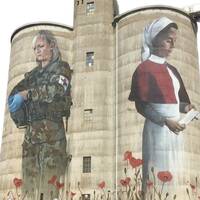 Jenny B
Jenny BThis transcription item is now locked to you for editing. To release the lock either Save your changes or Cancel.
This lock will be automatically released after 60 minutes of inactivity.